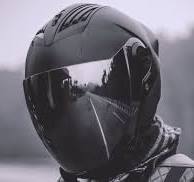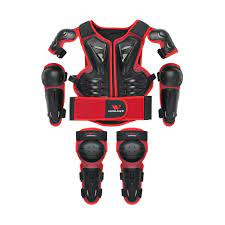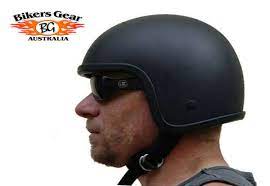Maximise Safety and Comfort with a Full Face Visor Helmet

The Benefits of Full Face Visor Helmets
Motorcycle safety is paramount for riders of all levels. One essential piece of protective gear that every rider should consider is the full face visor helmet. Offering superior protection and comfort, these helmets have become a popular choice among motorcyclists worldwide.
One of the key advantages of a full face visor helmet is its comprehensive coverage. Unlike open-face helmets, which leave the chin and face exposed, full face visor helmets provide complete protection for the entire head. This design not only safeguards the rider’s face from impact in the event of a crash but also shields against wind, debris, and other elements while riding.
Moreover, full face visor helmets come equipped with a built-in visor that offers additional benefits. The visor protects the rider’s eyes from dust, insects, sunlight, and wind, enhancing visibility and overall riding comfort. Many visors are also designed to be anti-fog and scratch-resistant, ensuring clear vision in various weather conditions.
In addition to protection and visibility benefits, full face visor helmets are known for their aerodynamic design. The streamlined shape reduces wind resistance at high speeds, enhancing stability and reducing rider fatigue on long journeys. This aerodynamic feature not only improves performance but also contributes to a more enjoyable riding experience.
Comfort is another significant advantage of full face visor helmets. Many models come with advanced ventilation systems that keep riders cool and comfortable during hot weather or intense rides. The interior padding is often moisture-wicking and removable for easy cleaning, ensuring a snug yet breathable fit for optimal comfort.
Overall, full face visor helmets offer a combination of safety, visibility, aerodynamics, and comfort that make them an excellent choice for motorcycle riders seeking top-notch protection on the road. Investing in a high-quality full face visor helmet is not just about complying with safety regulations—it’s about prioritising your well-being and enjoying a safe and fulfilling riding experience.
Essential FAQs About Full Face Visor Helmets: Safety, Fit, and Maintenance
- What are the benefits of using a full face visor helmet?
- How do I choose the right size for a full face visor helmet?
- Are full face visor helmets safer than other types of helmets?
- Can I wear glasses or sunglasses with a full face visor helmet?
- Do full face visor helmets have good ventilation to prevent overheating?
- Are there different types of visors available for full face helmets?
- How should I clean and maintain my full face visor helmet?
- Can I customize or replace the visor on my full face helmet?
- Are there any regulations regarding the use of full face visor helmets on the road?
What are the benefits of using a full face visor helmet?
Using a full face visor helmet provides a range of benefits for motorcycle riders. Firstly, the comprehensive coverage offered by these helmets ensures complete protection for the head, including the face and chin, reducing the risk of serious injuries in case of an accident. Additionally, the built-in visor enhances visibility by shielding the eyes from dust, insects, sunlight, and wind, improving safety on the road. The aerodynamic design of full face visor helmets not only reduces wind resistance at high speeds but also contributes to better stability and comfort during rides. Overall, opting for a full face visor helmet is a wise choice for riders looking to prioritise safety, visibility, and overall riding experience.
How do I choose the right size for a full face visor helmet?
When selecting the appropriate size for a full face visor helmet, it is crucial to prioritize both comfort and safety. To determine the right fit, start by measuring the circumference of your head using a flexible tape measure. Ensure the tape measure rests just above your eyebrows and ears for an accurate measurement. Refer to the manufacturer’s sizing chart to match your head circumference with the corresponding helmet size. It is essential that the helmet fits snugly but not too tight, with no pressure points or gaps. Remember that different brands may have slightly varying sizing standards, so trying on helmets in person is recommended whenever possible to ensure a proper fit. A well-fitted full face visor helmet will provide optimal protection and comfort for your rides, so take the time to find the right size that suits you best.
Are full face visor helmets safer than other types of helmets?
When considering helmet safety, the question often arises: Are full face visor helmets safer than other types of helmets? Full face visor helmets are widely regarded as offering superior protection compared to other helmet styles. Their full coverage design provides comprehensive head protection, including the chin and face, which can be crucial in the event of a crash. The integrated visor adds an extra layer of safety by shielding the rider’s eyes from debris and enhancing visibility. While all helmets must meet safety standards, the added coverage and features of full face visor helmets make them a popular choice among riders prioritising safety on the road.
Can I wear glasses or sunglasses with a full face visor helmet?
Wearing glasses or sunglasses with a full face visor helmet is a common concern among motorcycle riders. The good news is that many full face visor helmets are designed to accommodate eyewear comfortably. Some helmets feature special cutouts or channels near the temples to allow the arms of glasses to fit snugly without causing discomfort. Additionally, there are anti-fog visor options available that help prevent condensation, reducing the likelihood of fogging up your glasses or sunglasses while riding. Overall, with the right helmet fit and proper adjustment of your eyewear, it is possible to wear glasses or sunglasses with a full face visor helmet for a safe and comfortable riding experience.
Do full face visor helmets have good ventilation to prevent overheating?
Full face visor helmets are designed with ventilation systems that help prevent overheating during rides. These helmets feature strategically placed vents that allow for airflow, keeping riders cool and comfortable even in hot weather conditions. The ventilation system helps to regulate temperature inside the helmet, reducing the risk of overheating and ensuring a pleasant riding experience. Riders can adjust the vents based on their preferences, allowing for customized airflow to suit different riding conditions. With proper ventilation, full face visor helmets strike a balance between protection and comfort, making them an ideal choice for riders looking to stay cool and safe on the road.
Are there different types of visors available for full face helmets?
Yes, there are various types of visors available for full face helmets to cater to different preferences and riding conditions. Some common types include clear visors for optimal visibility in all weather conditions, tinted visors for reducing glare and UV protection on sunny days, mirrored visors for a sleek look and additional sun protection, and anti-fog visors to prevent condensation buildup in cold or humid environments. Riders can choose the type of visor that best suits their needs and riding style to enhance both safety and comfort while on the road.
How should I clean and maintain my full face visor helmet?
Proper maintenance of your full face visor helmet is essential to ensure its longevity and effectiveness. To clean your helmet visor, start by using a mild soap and water solution to gently remove dirt and debris. Avoid using harsh chemicals or abrasive materials that may damage the visor’s surface. After cleaning, allow the visor to air dry or use a soft, lint-free cloth to prevent scratches. Regularly inspect the visor for any signs of wear or damage, such as cracks or deep scratches, and replace it if necessary to maintain optimal safety standards. Additionally, keep the helmet’s interior clean by removing and washing the removable padding according to the manufacturer’s instructions. By following these simple maintenance practices, you can ensure that your full face visor helmet remains in top condition for safe and enjoyable rides.
Can I customize or replace the visor on my full face helmet?
When it comes to customizing or replacing the visor on a full face helmet, it’s essential to consider compatibility and safety. While some helmets allow for visor customization or replacement, it’s crucial to follow the manufacturer’s guidelines and use only approved visors designed for your specific helmet model. Choosing a visor that meets safety standards ensures proper fit, visibility, and protection in various riding conditions. Before making any changes to your helmet visor, consult the manufacturer’s recommendations to maintain the integrity of your protective gear and ensure optimal safety on the road.
Are there any regulations regarding the use of full face visor helmets on the road?
When it comes to the use of full face visor helmets on the road, it’s essential to be aware of the regulations in place to ensure compliance and safety. In many countries, there are specific laws governing the use of helmets for motorcyclists, including requirements for helmet type and features. Full face visor helmets are often recommended or mandated by regulations due to their comprehensive protection and enhanced safety features. Riders should familiarise themselves with local laws and regulations regarding helmet usage to ensure they meet the necessary standards for safe riding on the road.


